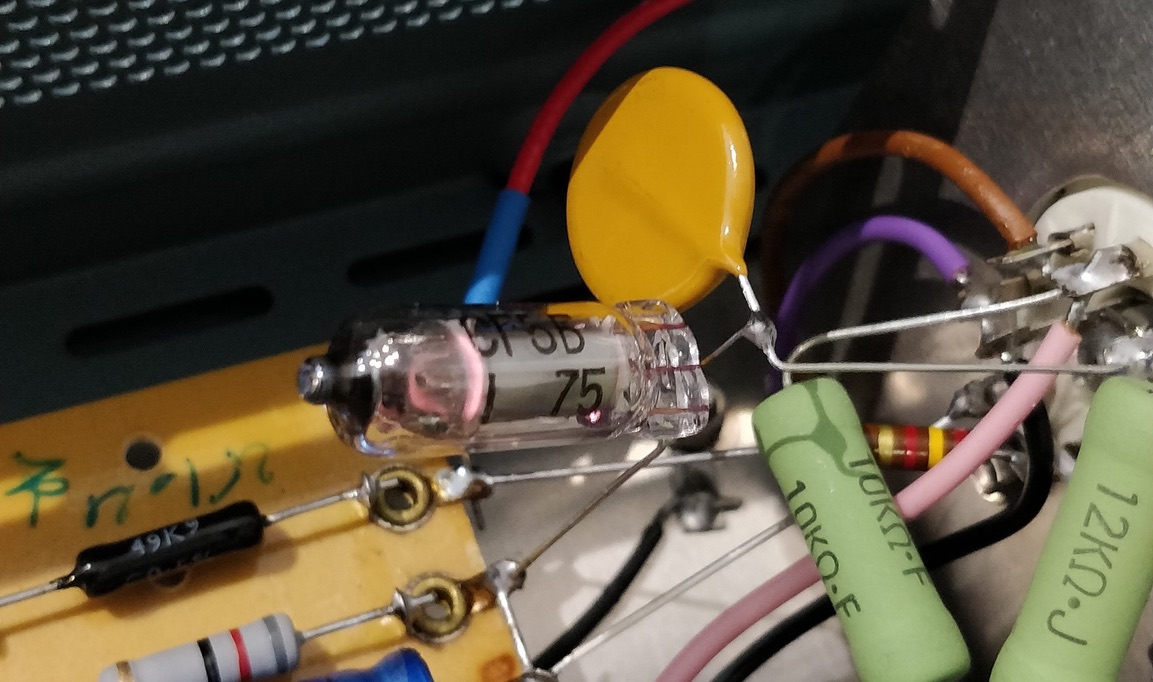Once in a while doesn’t harm, I built a tube-regulated supply. The reason was to precisely set the tetrode anode voltage and see if it changes or not sonic signature compared to a classic CLCLC supply.
Based on a classic 3-tubes schematic, a pass element is coupled to an error amplifier and paired to a constant voltage source. Many tubes are usable, so I dug my stock and picked a beefy 6336A, a tiny 6AU6, and a 0A2 glow discharge tube. Calculation is a bit tedious, but there is abundant literature to help design
Prior to regulation, HV is filtered by a basic CLC network. Time constants have been taken into account to ensure a fast recovery, even on drums, piano or guitar attacks. Never forget it is the heart of any amp or preamp.
The 6336A can draw a large current, and this supply is just limited by power transformer capabilities, here 200 mA. Way enough for this phono! Another important feature is the very low output impedance.
Making of
On the bench, ready for tests.
Preamp has a very large swing capability without clipping.
THD setup. 0,038% @ 1 Vrms/1KHz (deducted 0,02% from signal generator), mainly H2, other harmonics are at background noise level. Not that bad.
Once the supply was completed, I carried out a comparative study.
I must confess that the regulated supply vs. just a filtered one brought me to a very different perception of music restitution. Soundstage is wider and deeper, no contest, but what hit me the most is the more focused, deeper bass. Music gained weight and intelligibility while being more suave and distinguished. Dynamic is excellent, probably due to a very fast recovery on attacks.
I decided to compare this new phono to the C3g one, which I know quite well. I fed the 5A/180M preamp with Mullard's M8136/CV4003 to be on the same amplification level as the C3g and used the Entré EC30 cartridge.
Have to say that the M8136, old production, deserves its reputation. Probably the best of all the 12AU7/ECC82, along with the 5814A triple mica by Siemens, warm tone, clear and ample voice, and wide soundstage. A must-try. To my ears, no other tube comes close, not even the very desirable TFK ECC802S.
I replaced the Russian SG5B by Raytheon 6542, which is less noisy by a slight margin. Probably because they can withstand more than twice the current.
With very similar gain for both units, A/B tests can be performed easily.
I thought the C3g was the ultimate step in micro-detail restitution. The 5A/180M goes beyond. I never heard voices I perfectly knew with such accuracy and presence (Claire Austin_when your lover has gone). This is due to subtle information like very small breaths, lip movements, or tongue noises I hadn’t heard before. This also happens with instruments and brings music to a new level of authenticity. Unfortunately, this is also true for surface noises, which sometimes bother with poor records. However, this preamp has such a resolution that I can’t stop listening to music encore and encore.
In its dedicated environment (6J5 line preamp, DA41 A2 amplifier, Klipsch_Altec speakers ) this phono does everything with ease. Low end is just amazing with the FR1Mk3 and 13D3 (Ludwig Streitcher_Plays Bottesini), but not only. I played a variety of music, from jazz (for Duke_Bill Berry and Don Wilkerson_Preach Brother) to classical (Vivaldi Concerto Köln_Shunske Sato, Beethoven sonatas_Paul Badura-Skoda), with pure enjoyment.




































